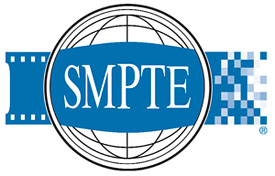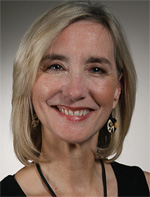SMPTE Breaks Down Barriers(2)
LOS ANGELES
Extending the reach of 1080i and 720p transmissions to the local news level and the rapidly developing realm of 3D for films—and soon television—as well as addressing audio hiccups and content security in the digital age, are among the key issues on tap at the Annual Tech Conference & Expo of the Society of Motion Picture and Television Engineers.
The three-day SMPTE meeting in Los Angeles, Oct. 27-29, assumes its yearly challenge of assembling engineers from two different, but ultimately interrelated, industries under the same roof (in this case, the Hollywood Renaissance Hotel)—industries whose technological ties have been drawn somewhat closer lately with the migration to digital technology. Conference sponsors include Sony, Warner Bros., Real-D 3D, Photo Research Inc., Mann Theatres, For-A, AZCAR and CBS.

The annual gathering also comes at a time when the 93-year-old White Plains, N.Y.-based organization searches for a new executive director after Kimberly Maki recently concluded a three-year term and subsequently took a position with Bright House Networks.
Peter Symes, SMPTE's director of standards and practices, said the inherent differences between the film world and television is not what it was a few years ago. "It's becoming much less of an issue," he said. "There will always be differences in both media, but now you have 'digital cinema' and almost any production now destined at some point for cinema release will be ordained for [digital] television as well, or mobile phones and certainly other distribution modes. The whole focus now is on how to create [content] in a way that's suitable, that's deliverable, for many media venues."
Symes believes engineers in both industries "have come to realize that you've got to get rid of that conceptual barrier [between] broadcast and cinema. So for our conference, there will be a few things that might be of interest to film or to television people—but a vast majority of the conference program this year we think is really relevant to everybody."
HD & 3D
While the typical set of audio issues, digital asset management questions and exploration of new methods of film and analog video restoration will be targeted in sessions led by experts in their respective fields, most broadcast engineers in the United States still face the very practical challenge of refitting their digital ops centers for local HD news, sports and weather content in a strained economy. These issues will be addressed in a Wednesday afternoon session, "HD News and Newsgathering," chaired by John Luff of HD Consulting, USA.
No potential seachange breakthroughs have risen as rapidly in the past couple of years as emerging 3D technologies. After a shaky, short start a half century ago when 3D was used more as a marketing gimmick than a promising technology in theaters, 2009 will see virtually every computer-animated, full-length motion picture from Hollywood studios deploying some form of 3D technology. And with theaters leading the way, can 3D in the home be far behind? Yes—if you believe major set manufacturers like Sony and Panasonic, who have 3D HD sets in their short-range sights for 2010.
"We'll be at the center of what's happening for 3D in the home at our conference," Symes said. "I think 3D is seen as an enhancement to the current state of the art. I don't see it as any type of replacement for HD."
Wendy Aylsworth, senior vice president of technical operations at Warner Bros., said there are some compelling economic and technical factors supporting the rollout of 3D now. Aylsworth, who has helped SMPTE realign its basic committee structure to better address new technologies, said 3D movies are generating more revenue in movie theaters in 2009 than their 2D release counterparts, with reports of up to three times' higher box office receipts for 3D over 2D screenings.
SMPTE has already established a set of 3D standards for distribution of stereoscopic digital cinema, and recently created a new Working Group reporting to its 10E Essence Technology Committee to work up the first standards for 3D distribution to the home. Aylsworth, who serves on SMPTE's Board of Governors, said the challenge will be to initiate standards that support the widest array of stereo encoding techniques, as well as support a variety of distribution methods. "We're still in the process of learning what makes a good quality [3D] experience in the differing environs of a large darkened theater, as well as a on a moderately lit home television, or on a small mobile device used in any type of light," she said.

Wendy AlysworthDEVELOPING AND REVISING STANDARDS
Aylsworth said consumer electronics companies now see 3D as a "significant differentiator" that could help boost new-device sales following the widespread adoption of HD devices and services. "Clearly, the SMPTE 3D Home Master Task Force—and our SMPTE Standards Committee—will consider using source material that starts with theatrical, to develop a baseline for the '3D home master content standard,'" she said.
Matt Cowan, chief scientific officer at Real D, will chair the "3D Content Distribution" session on Wednesday morning. For television, he says, because stereoscopic 3D requires the delivery of two views (one for each eye), it also means providing twice the "information"—thereby requiring the greater need for bandwidth.
"In cinema, this has been solved through SMPTE's standardization of a distribution format that delivers left- and right-eye views as essentially independent frames," Cowan said. Bill Zou of DTS, Inc. will address Cowan's 3D session (one of several 3D events) on the challenges of distributing to the home.
Other key issues at the meeting will include a revision of SMPTE's longstanding Time Code standard to provide a means of synchronizing multiple digital signals (and combos of digital/analog signals). The revision would allow a wider array of content to be more rapidly assembled and delivered to consumers. And since last year's meeting, SMPTE has created its 23B Broadband Technology Committee to establish standards which permit content to move in and out of broadband-enabled devices without having to constantly reconstruct content from the source.
SMPTE's overall committee structure recently was reconfigured to reflect (like 3D itself) a three-dimensional approach for all issues. Basically, one committee focuses on the mastering and archival of content "essence." A second set of committees is established to address how that master content is formatted and packaged before being distributed to a variety of distribution channels. Finally, a third set of committees provides the infrastructure elements that support workflow from content creation to distribution (i.e., file structures, networks and metadata).
To register for SMPTE, visit www.smpte2009.org.
Get the TV Tech Newsletter
The professional video industry's #1 source for news, trends and product and tech information. Sign up below.
